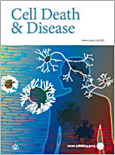
FEBS Journal
Scope & Guideline
Exploring New Horizons in Molecular Biology
Introduction
Aims and Scopes
- Biochemical and Molecular Mechanisms:
The journal emphasizes studies that elucidate the biochemical pathways and molecular mechanisms underpinning cellular functions and disease processes, including signaling pathways, metabolic regulation, and enzyme function. - Structural Biology and Biophysics:
Research involving the structural characterization of biological macromolecules such as proteins and nucleic acids, utilizing techniques like X-ray crystallography, NMR, and cryo-electron microscopy, is a core focus. - Cellular and Developmental Biology:
The journal covers research on cellular processes, including cell differentiation, growth, and apoptosis, as well as developmental biology, exploring how these processes are regulated at the molecular level. - Cancer Biology and Therapeutics:
A significant emphasis is placed on studies related to cancer biology, including tumor microenvironment interactions, cancer stem cells, and novel therapeutic strategies. - Immunology and Microbiology:
The journal publishes articles on immune responses, pathogen-host interactions, and the microbiome's role in health and disease, reflecting the growing interest in these areas. - Neurobiology and Neurodegeneration:
Research addressing the molecular mechanisms of neurodegenerative diseases, neuroinflammation, and neuronal signaling is prominently featured, highlighting the journal's commitment to understanding brain health.
Trending and Emerging
- Cancer Immunotherapy:
Publications focusing on cancer immunotherapy have surged, highlighting the importance of understanding immune responses to tumors and the development of novel immunotherapeutic strategies. - Microbiome Research:
The role of the microbiome in health and disease is increasingly prominent, with studies examining its impact on various physiological processes and its potential as a therapeutic target. - Cellular Senescence and Aging:
Research on cellular senescence, its role in aging, and its implications for age-related diseases is gaining traction, reflecting a growing interest in understanding the biological mechanisms of aging. - Gene Editing Technologies:
The application of CRISPR and other gene editing technologies is increasingly featured, focusing on their potential for therapeutic interventions and understanding genetic diseases. - Metabolism and Disease:
Emerging studies on the links between metabolism, metabolic disorders, and diseases such as cancer and neurodegeneration are becoming more common, emphasizing the importance of metabolic pathways in health. - Extracellular Vesicles:
Research on extracellular vesicles and their roles in cell communication, disease progression, and potential therapeutic applications is gaining popularity, reflecting their significance in various biological processes.
Declining or Waning
- Basic Enzyme Kinetics:
Research focusing solely on basic enzyme kinetics has seen a decline, as the field increasingly emphasizes the integration of kinetic studies with structural biology and functional assays. - Traditional Pharmacology:
There is a noticeable reduction in studies centered on traditional pharmacological approaches, as the focus shifts towards molecular and genetic therapies, particularly in the context of cancer and chronic diseases. - Plant Biochemistry:
While still relevant, the volume of research specifically addressing plant biochemistry and physiology appears to be waning, potentially due to a shift towards more applied or translational research in agricultural biotechnology. - Studies on Model Organisms:
Research utilizing model organisms like yeast or Drosophila for basic biological questions is less frequent, with a trend towards more complex systems that reflect human biology more closely. - In Vitro Assays:
There seems to be a decline in the publication of studies relying solely on in vitro assays without further validation in vivo, as the scientific community increasingly values comprehensive approaches that include physiological relevance.
Similar Journals

CELL PROLIFERATION
Unlocking the Mysteries of Cell Growth and DivisionCELL PROLIFERATION, published by Wiley, is a leading open-access journal that has been at the forefront of research since its inception in 1968. With an impact factor that solidifies its position in the Q1 category of both Cell Biology and Medicine (Miscellaneous), this journal serves as a premier platform for disseminating groundbreaking studies in the field of cellular and molecular biology. The journal is renowned for its rigorous peer-review process and comprehensive coverage of topics related to cell growth, division, and differentiation, making it an invaluable resource for researchers, professionals, and students alike. With its notable Scopus ranking of #30 in Biochemistry, Genetics, and Molecular Biology: Cell Biology, and a robust open access model since 2019, CELL PROLIFERATION ensures that cutting-edge research is accessible to a global audience, fostering collaboration and innovation across the scientific community. Located in the United Kingdom, the journal remains committed to enhancing the understanding of cellular processes, thereby influencing developments in medicine and biotechnology.

MOLECULAR AND CELLULAR BIOCHEMISTRY
Exploring Cellular Processes with PrecisionMOLECULAR AND CELLULAR BIOCHEMISTRY, an esteemed journal published by SPRINGER, serves as a prominent platform in the fields of biochemistry and molecular biology. With a history of dissemination since 1973, this journal has made significant contributions to the understanding of biochemical processes at the molecular level. The MOLECULAR AND CELLULAR BIOCHEMISTRY journal focuses on a myriad of topics including but not limited to cellular biochemistry, clinical biochemistry, and interdisciplinary approaches in medicine, boasting a commendable categorization in the 2023 Scopus ranks where it falls under Q3 in Cell Biology, Q2 in Clinical Biochemistry, Q1 in Medicine (miscellaneous), and Q2 in Molecular Biology. Although the journal is not open access, it provides access options through institutional subscriptions, making valuable research accessible to a wider audience. With its rigorous peer-review process and high impact within the scientific community, this journal aims to advance knowledge and stimulate exploration in biochemical research, making it essential reading for researchers, professionals, and students alike.

Protein & Cell
Connecting Researchers Through Open Access InsightsProtein & Cell, published by Oxford University Press, is a distinguished international journal focusing on cutting-edge research in the fields of biochemistry, biotechnology, cell biology, and drug discovery. This open access journal, active since 2014, is dedicated to disseminating innovative findings that advance our understanding of protein functions and cellular processes, making it an essential resource for researchers, professionals, and students alike. With an impressive 2023 impact factor reflected in its Q1 ranking across multiple categories such as Biochemistry, Drug Discovery, and Cell Biology, 'Protein & Cell' stands at the forefront of scientific research, driving collaboration and discussion in the scientific community. Researchers can access the journal freely online, fostering a global exchange of knowledge and contributing to significant advancements in medicine and biotechnology. Located in the United Kingdom, the journal strives to be a pivotal platform for impactful research that influences future studies and applications.

BIOSCIENCE REPORTS
Fostering Innovation in Biological ResearchBIOSCIENCE REPORTS, published by Portland Press Ltd, is a prestigious journal dedicated to advancing the fields of biochemistry, biophysics, cell biology, and molecular biology. Founded in 1981, the journal has established itself as a vital resource for researchers and professionals, boasting a significant impact factor and high rankings within its categories, including Q2 in Biochemistry and Q1 in Biophysics as of 2023. The journal’s commitment to high-quality, peer-reviewed research ensures that it remains an influential platform for the dissemination of cutting-edge scientific findings. While it operates under a traditional subscription model, it offers various access options to accommodate the needs of the scientific community. With ongoing publication through 2024, BIOSCIENCE REPORTS continues to play a crucial role in shaping discussions in the life sciences and fostering innovative research in biology.

CELLULAR AND MOLECULAR BIOLOGY
Exploring the Intricacies of Cellular MechanismsCellular and Molecular Biology is a prominent academic journal published by C M B ASSOC, specializing in the dynamic fields of cellular and molecular biology. Established in 1977, this journal has consistently aimed to disseminate groundbreaking research that contributes to our understanding of biochemical processes, cell dynamics, and molecular mechanisms governing life. With its ISSN 0145-5680 and E-ISSN 1165-158X, the journal plays a vital role in the exchange of innovative ideas, evidenced by its coverage of research from 1977 to 2024. Although currently categorized in the Q4 quartile for major disciplines such as Biochemistry and Cell Biology, it is dedicated to fostering the development of the field by welcoming submissions that challenge the conventional understanding and lead to novel insights. Researchers and academics looking to contribute to or stay updated in the rapidly evolving landscape of molecular biology will find this journal a valuable resource for connecting with a global community of scientists.

Cell Communication and Signaling
Pioneering Research in Biochemical PathwaysCell Communication and Signaling is a premier peer-reviewed journal published by BMC that has made significant contributions to the fields of biochemistry, cell biology, and molecular biology since its establishment in 2003. As an open access journal, it offers unrestricted access to high-quality research, fostering collaboration and innovation among scientists around the globe. The journal is distinguished by its Q1 ranking in all three relevant categories for 2023, underscoring its critical role in advancing the understanding of cellular communication mechanisms and signaling pathways. Positioned within the United Kingdom, Cell Communication and Signaling has been an invaluable resource for researchers, professionals, and students alike, ensuring that the latest findings are accessible to a diverse range of audiences. With an impressive Scopus ranking—placing it in the top percentiles within its subject areas—this journal continues to set the standard for excellence in the pursuit of understanding complex cellular interactions.

Cell Discovery
Fostering Global Collaboration in Cellular ResearchCell Discovery, published by SPRINGERNATURE, is a premier open access journal in the dynamic fields of Biochemistry, Cell Biology, Genetics, and Molecular Biology. Since its inception in 2015, this journal has established itself as a key platform for disseminating high-impact research and is recognized with a Q1 ranking across all its core categories for the year 2023. With its remarkable Scopus rankings—7th in Genetics, 9th in Biochemistry, 13th in Molecular Biology, and 15th in Cell Biology—Cell Discovery positions itself among the elite journals in life sciences, showcasing the most innovative breakthroughs and comprehensive reviews. Based in the United Kingdom, this journal operates under an open access model, ensuring that groundbreaking discoveries are readily available to researchers, professionals, and students around the globe. With a commitment to advancing scientific knowledge, Cell Discovery welcomes contributions that push the frontiers of our understanding in cellular and genetic sciences.

FOLIA BIOLOGICA
Elevating Biological Research Through Peer ReviewFOLIA BIOLOGICA, published by Charles University Prague, First Faculty of Medicine, is an esteemed academic journal that has been contributing to the fields of Biochemistry, Cell Biology, Developmental Biology, Genetics, Immunology, and Molecular Biology since its inception in 1961. With an ISSN of 0015-5500, this journal serves as a vital platform for researchers and professionals to disseminate their findings and advance knowledge within these disciplines. Despite its current Category Quartiles ranking in the lower tiers (Q3 and Q4), FOLIA BIOLOGICA continues to provide valued insights and foster scholarly dialogue, particularly in its paralleled fields. The journal is headquartered in Prague, Czech Republic, and operates without Open Access options, which emphasizes its focus on curated, peer-reviewed content essential for academicians and students. By bridging theoretical and practical knowledge, FOLIA BIOLOGICA remains committed to enriching the scientific community and serving as a cornerstone for future research innovations.

Cell Death & Disease
Leading the charge in transformative biomedical discoveries.Cell Death & Disease, published by SpringerNature, is a premier open-access journal dedicated to disseminating high-quality research on the mechanisms and implications of cell death, disease pathology, and therapeutic responses. Since its inception in 2010, the journal has quickly established itself within the top tier of academic publishing, achieving a notable impact factor and earning Q1 rankings in several critical categories including Cancer Research, Cell Biology, Cellular and Molecular Neuroscience, Immunology, and Medicine (miscellaneous). With its commitment to open access, Cell Death & Disease ensures that groundbreaking research is available to a global audience, fostering collaboration and advancing knowledge across disciplines. Residing at the forefront of crucial scientific discourse, this journal not only attracts submissions from leading researchers but also significantly influences the fields of molecular biology, immunology, and neurology. By bridging the gap between basic science and clinical applications, it provides vital insights for professionals, academicians, and students alike.

JOURNAL OF CELLULAR BIOCHEMISTRY
Fostering Excellence in Cellular Biochemistry ResearchJournal of Cellular Biochemistry is a premier academic journal dedicated to advancing the field of biochemistry and cellular biology. Published by Wiley, this influential journal has a significant impact factor that underscores its relevance and authority within the scientific community. With its ISSN 0730-2312 and E-ISSN 1097-4644, the journal has been on the frontier of research since its inception in 1982, and is expected to continue publishing cutting-edge studies through 2024. As evidenced by its ranking in the 2023 Scopus Quartiles, it holds a rank of Q2 in Biochemistry and Q3 in both Cell and Molecular Biology, placing it among the top tiers of scientific journals in these disciplines. The Journal of Cellular Biochemistry serves as a vital resource for researchers, professionals, and students alike, providing a platform for the dissemination of innovative ideas and findings that shape our understanding of cellular processes and biochemical pathways. Though it does not currently offer Open Access options, its robust peer-review process ensures that each publication meets the highest academic standards, thus solidifying its esteemed position in the landscape of biochemical research.